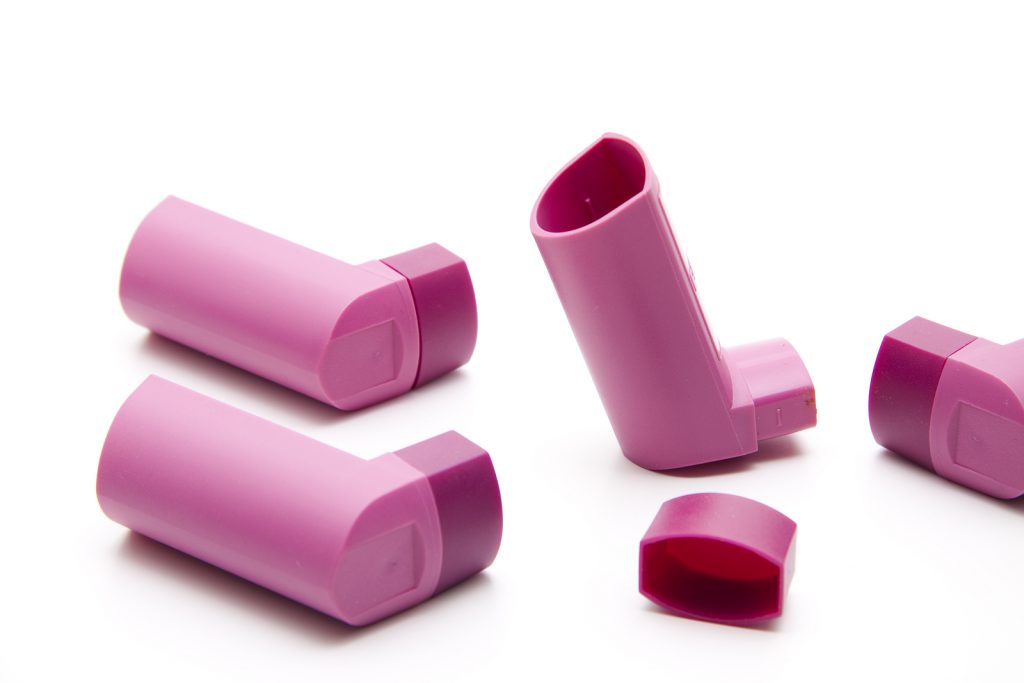
The airway
physiology and the bacterial burden of the airways, skin and gastrointestinal
tracts do not change meaningfully over time in asthmatic patients who are
exposed to an antibiotic, the Irish Thoracic Society Annual Scientific Meeting
was told.
Presenting on antibiotics and the microbiome in asthmatic
patients, Dr Orla O’Carroll from Connolly Hospital, Dublin, said that the
respiratory microbiome is a relatively new concept in terms of research.
“In fact the Index study, which proved for the first time
that the lungs were not sterile as previously thought, occurred only in 2009.
Since then there’s been an explosion of interest in the area,” she said.
“Although some key characteristics, particularly
pertaining to asthma remain undiscovered.
“What we do know is that the microbiome of the asthmatic
airway is significantly altered in asthmatic patients compared with controls,
or those with other disease processes.”
This alternation seems to be associated with some altered
clinical parameters, such as airway hyper-responsiveness and with response to
various treatment strategies.
In contrast, researchers knew more about the gut and skin
biome, which have benefited from a longer time of extensive research.
“And we do know that both of them are implicated with
asthma,” said Dr O’Carroll.
“If patients have lower gut diversity in infancy and
early life, there is a higher risk of developing asthma in later life.”
The microbiome of the skin is also implicated in atopic
dermatitis development, a condition closely related to asthma. However, it is
unknown how these three microbiome compartments interact in asthmatics. This
was one of the key questions the researchers sought to untangle, Dr O’Carroll
said.
“We also don’t know how they interact longitudinally and
we are not sure what effect treatments, such as antibiotics and steroids, have
on them.”
The aim of the study, which was carried out alongside
Imperial Hospital, London’s genomics lab, was to concurrently assess the
microbiome in multiple systems in asthmatic patients, to integrate this
assessment with detailed measures of airway physiology and to assess how the
microbiome change longitudinally in response to an antibiotic.
The population was drawn from the patients attending an
asthma clinic in Blanchardstown. They were excluded if they had confounding
occupations, were using systematic steroids or biological treatments for their
asthma or had BMI < 30. Patients were also only considered to be asthmatic
if they demonstrated objective evidence of airflow limitation.
If patients were eligible they were then consented and
underwent further detailed physiological assessment, including measurement of
fractional exhaled nitric oxide (FeNO).
Bronchoscopy was the next intervention carried out.
Patients had multiple lung brush samples taken as well as endobronchical
samples. Furthermore, faecal samples and skin swab samples were collected.
Patients were then given a 10-day course of oral levofloxacin.
After bronchoscopy and antibiotic treatment, patients
returned to the clinic at four weeks and six weeks, at which time skin swabs,
throat swabs, and faecal samples were repeated. A full lung function assessment
was also repeated and they underwent second bronchoscopy at eight weeks.
At the lab in London, all biological samples underwent
DNA extraction and precipitation, spectrophotometry, and 16S rRNA analysis
“The 16S rRNA copy count per ul can be used as an
imperfect but acceptable proxy for bacterial burden of each given sample,” said
Dr O’Carroll.
“It’s particularly useful in cases like this where it’s a
longitudinal comparative assessment.”
Some 13 patients successfully completed the study
protocol, and there was an even spread between male and female patients. All
patients were non-smokers and had never smoked and were medicated for asthma to
varying degrees. They were also medicated for other related conditions, such as
rhinitis, and other non-related conditions mostly hypertension.
The patients were stratified into genotreatment groups
via medication use; this revealed that most were at the moderate end of the
disease spectrum.
The key finding of the study was that airway physiology
and the bacterial burden of the airways, skin and gastrointestinal tracts do
not change meaningfully over time in asthmatic patients exposed to an
antibiotic.
“The value of this study is we believe it is the first concurrent
assessment of these different microbiome systems in a longitudinal sense,” Dr
O’Carroll said.
“It was a difficult study protocol for subjects, but it
showed that it is possible.”
She acknowledged that there were limitations to the
study, including the small sample size, which was mostly due to the intensity
of the trial protocol.
There was no DNA sequence data available as of yet to
complete the picture but this should be forthcoming, she said.
Dr O’Carroll added that it was very difficult to control
the confounders in the microbiome analysis.
In conclusion, the researchers found that altered airway
physiology defines asthma and that the microbiome is altered in asthma.
The airway physiology and bacterial burden of the lungs,
skin, and gut seem to remain constant over times, despite interventions.
The functional impacts of these relationships are largely
unknown and there is a need for further studies to define other characteristics
of the system, she said.
The researchers
believed that DNA sequence data will complete some of these observations.





Leave a Reply
You must be logged in to post a comment.